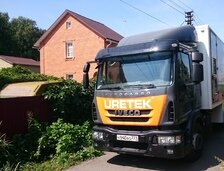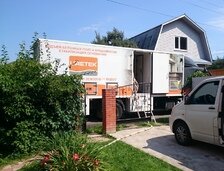Strengthening the house on very weak ground
- Category
- Private residential building
- Object
- Two-storey residential building
- Focus
- Strengthening the base and foundation structures
- Location
- Moscow region
- Time of work
- 2016 г.
- The timing
- 3 days
- TECHNOLOGY
- COLUMN INJECTION


Description:
The house on very weak soils required significant strengthening and increasing load-bearing capacity of the foundation soils.
Goal:
The goal was to fully support the ground floor and entrance construction with a tiled roof. The floor was built on a foundation slab with a depth of 300 mm below the surface.The technology that was supposed to solve the issue was limited by the requirement that it did not affect underground utilities, including a storm sewer at a depth of 1000 and a technical sewer pipe with a diameter of 225 mm at the same depth. Such requirements caused the need to conduct a study of the foundation soil. Five wells for dynamic penetration test. The results of fishing at a depth of approximately 1200 mm showed that the structure should be classified as "problematic" due to the ” very loose base" encountered at a depth of 2000 mm. The results of studying the soil cones obtained by a hand auger showed silty sand, dark gray and the water table 700 mm below ground level.
Solution:
Six polymer columns were installed under the existing foundations to provide support through the weak base layers and increase the bearing capacity of the supporting soils. The columns were installed approximately 2000 mm below the base. Uretek depth injections were then applied at a depth of 500 mm and then 1000 mm of the back surface along the sub-surface to ensure uniform support. The average lift was 4 mm, which was necessary in order to confirm the increased load-bearing capacity of the base. Thus, the house was completely restored. The owners of the house were very happy with the effect and timing of the work.
Result:
The result of the work was the stopping of the foundation subsudence processes, which was shown by repeated monitoring of the house structures.





